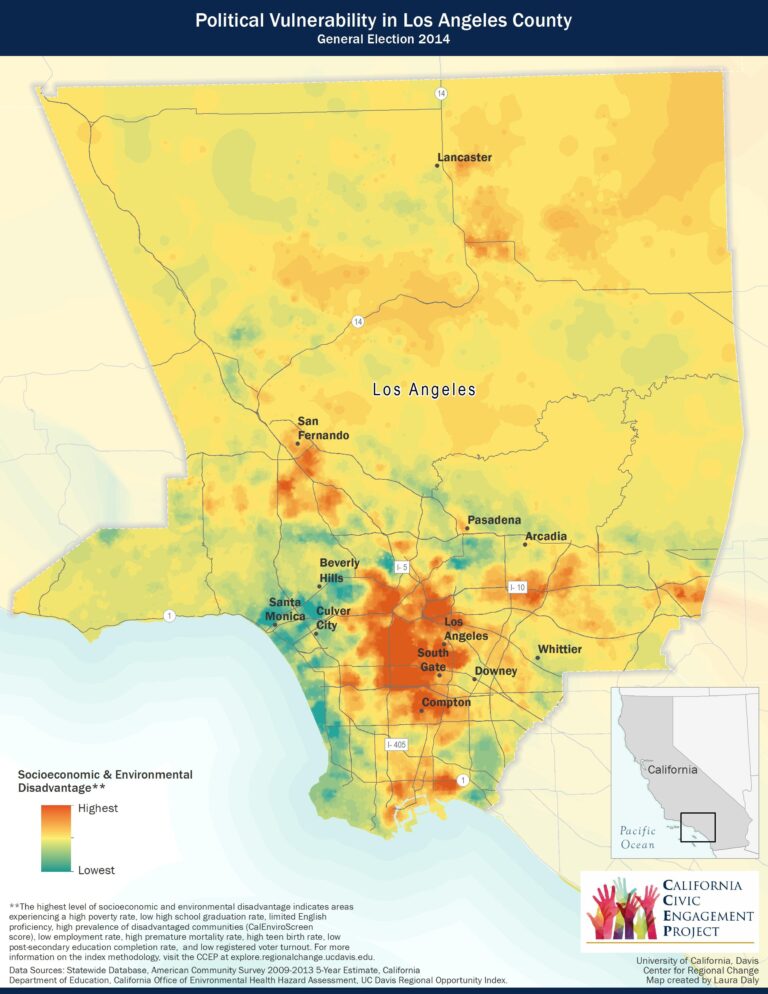Understanding the Democratic Party’s Challenges in Los Angeles County: A New Perspective
Shifting Electoral Trends in Los Angeles County Highlight Democratic Vulnerabilities
Once a reliable bastion for Democratic candidates, Los Angeles County is now revealing cracks in the party’s customary support base.Recent election outcomes demonstrate that key voter groups, including young adults and union members, have shown reduced enthusiasm at the polls. Despite the county’s overall Democratic lean, a notable decline in turnout—notably among economically disadvantaged neighborhoods—signals a growing disconnect between the party’s platform and the priorities of its constituents.
Examining the voting data uncovers several emerging patterns that could foreshadow long-term obstacles for Democrats in the region:
- Suburban realignment: Areas once considered secure Democratic territory are witnessing tighter races, reflecting shifting voter allegiances.
- Latino voter disengagement: Even though the Latino population continues to grow, participation rates have dropped, partly due to dissatisfaction with immigration and economic policies.
- Internal party divisions: The rise of progressive challengers has fragmented the vote, weakening unified support for mainstream candidates.
| Demographic Group | Change in Turnout | Effect on Election Results |
|---|---|---|
| Young Adults (18-29) | -9% | Reduced margins in urban centers |
| Latino Voters | -7% | Loss of competitiveness in pivotal districts |
| Union Members | -5% | Weakened support in industrial neighborhoods |
Economic Hardships and Social Concerns Fueling Voter Frustration
Campaign Missteps: Why Democratic Outreach Fell Short
The Democratic campaign in Los Angeles County struggled to effectively connect with crucial voter segments due to strategic errors. While focusing heavily on progressive urban voters, the campaign neglected the nuanced concerns of suburban and working-class populations, resulting in a failure to build a broad coalition. Messaging often appeared disconnected from local realities, alienating swing voters who felt overlooked.
Key shortcomings included:
- Excessive reliance on digital platforms: Overemphasis on social media outreach missed older voters who prefer traditional communication methods.
- Limited grassroots presence: Insufficient door-to-door canvassing weakened community engagement and trust.
- Generic messaging: Campaign themes focused on broad policy issues without addressing pressing local challenges like housing and safety.
| Voter Group | Engagement Level | Overlooked Priority |
|---|---|---|
| Suburban Residents | Low | Community Safety |
| Working-Class Families | Moderate | Job Security |
| Senior Citizens | Low | Healthcare Services |
Strategies for Revitalizing Democratic Support in Urban Areas
To reclaim influence in urban centers like Los Angeles County, Democrats must realign their focus toward tangible local issues that resonate with everyday voters. Prioritizing affordable housing, enhancing public transit, and improving community safety are critical steps.Moving beyond national rhetoric, the party should deepen partnerships with grassroots organizations that possess intimate knowledge of neighborhood-specific challenges, thereby rebuilding trust through authentic engagement.
Combining traditional canvassing with innovative digital outreach can create a more inclusive and effective campaign strategy. Emphasizing economic empowerment alongside social equity can unite diverse constituencies in cities marked by inequality. The following table outlines key areas for strategic investment and their potential impacts:
| Priority Area | Recommended Action | Anticipated Outcome |
|---|---|---|
| Affordable Housing | Increase subsidies and reform zoning laws | Boost homeownership rates and reduce homelessness |
| Public Transportation | Upgrade infrastructure and lower fares | Enhance accessibility and promote environmental sustainability |
| Community Safety | Support local initiatives and improve police accountability | Strengthen public trust and decrease crime |
| Economic Inclusion | Invest in small businesses and workforce training | Stimulate economic growth and reduce income inequality |
Conclusion: Lessons from Los Angeles County for the Democratic Party
The evolving political dynamics in Los Angeles County offer a revealing case study of the broader challenges confronting the Democratic Party nationwide. Demographic shifts,economic hardships,and localized governance issues have combined to reshape voter behaviour and party loyalty.For Democrats to regain momentum, they must confront these multifaceted realities with targeted, community-centered strategies. The experiences in Los Angeles underscore a critical juncture in American politics—one that demands thoughtful analysis and adaptive leadership to rebuild trust and secure future electoral success.




